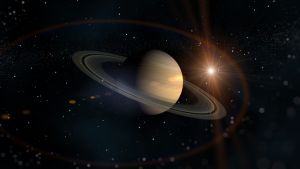To a child, learning that there are other planets besides Earth can be a mind-boggling experience. Although it may seem like a foreign concept, learning that there is more out there can be educational and exciting.
Going beyond the Earth’s atmosphere involves learning about the moon, stars, and planets such as Mars and Jupiter. The way that planets are constantly rotating is something important to point out, too. In order to learn about the solar system, parents and teachers can educate their children all that there is to know about what lies beyond our own amazing planet.
The following activities will get your child engaged and educated about the solar system.
Edible Planets
This activity is educational and delicious. Start out by using different types of candies or something colorful like M&M’s. For example, Mars could be a red M&M and Earth can be a blue Skittle. To make it seem even more accurate, draw in pencil or pen a picture or outline of what the solar system looks like on a piece of paper and then label the planets. Add the candies for color.
Wish You Were Here
This activity is for the budding travel agents. Have your child choose his or her favorite planet and create a postcard or travel documents based on the planet’s characteristics. This involves research on the planet and marketing skills as well!
Once your child has made their document, have them make their pitch to you. Your child will love being able to pretend to be a travel agent, trying to sell you on a trip to Mars or Jupiter. Ask them simple questions about the trip and the planet to test their knowledge and their imagination. Once they're done, agree to the trip and watch how happy they get!
Act It Out
For teachers, select children to represent different parts of the solar system. You can design costumes for these if you wish. Have the main character be the sun and let all the other kids (planets) rotate around him or her. By incorporating dialogue, the students can recite different facts about his or her planet.
You can also do this at home. Have your child write out a small play about the solar system. This play can involve other people, if they are willing, or it can just involve your child on their own. In this play, your child should feature some facts about the solar system. This is a great way to both test your child's knowledge of the solar system and encourage their creativity.
Create A Lunar Module
A module of the solar system can be created using different types of materials. From foam balls to Play-Doh, your child can create their own solar system. For the more adventurous types, a child can add string to each planet, and connect them all by using hangers or whatever else can hold up the module.
Using the Floor
Start out by getting different colors of construction paper. Draw the different planets on the corresponding color of paper and cut them out. Arrange them on the floor, indicating the distances between each one. This gives your child another perspective of the solar system.
You can test your child's knowledge of the solar system with these planet cut-outs. Give them all of the planets, and have them arrange each planet on the floor in the right order, based on distance from the sun. See if they can get all of the planets in the correct order!
Create A Coloring Book
By using white, blank sheets of paper stapled together, your child can create a coloring book of the solar system. Use pencil to draw outlines of every planet. Once that is completed, grab some crayons and start bringing them to life.
You can also use a coloring book to teach your child about some of the other objects in our solar system. Stars, asteroids, and satellites are great items to add to a coloring book to help teach your child more about space. It can get them asking questions about the different objects that inhabit our universe, and what the differences are between them.
Solar System Posters
This is a great way to decorate the classroom. For teachers, assign students a specific part of the solar system, whether it is a planet, the sun, or an asteroid. By providing them with big, blank sheets of poster paper, have them design posters. They can be displayed around the classroom for everyone to see.
If you don't have enough solar system objects for everyone, this can turn into a great team-building activity. Split the class into pairs, and assign each pair a part of the solar system. Have each pair of students work together to create a poster for their assigned object.
The image featured at the top of this post is ©H.R.G/Shutterstock.com.
